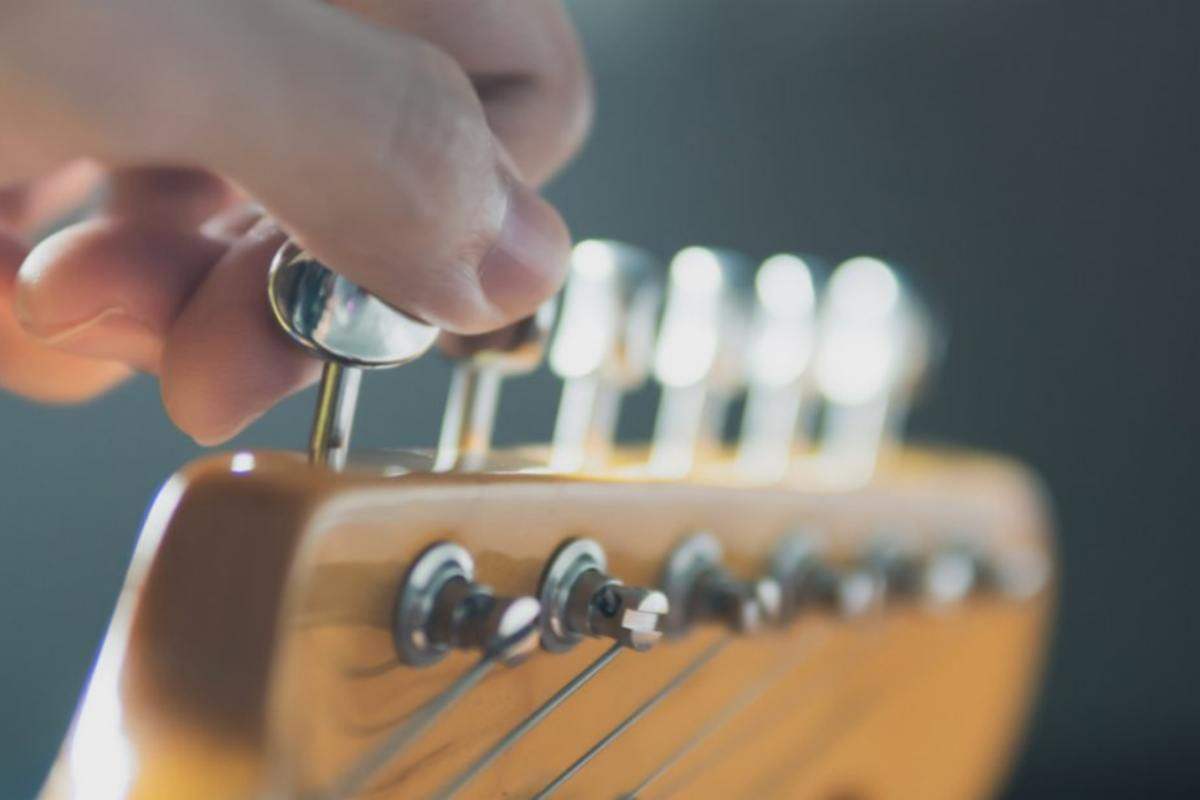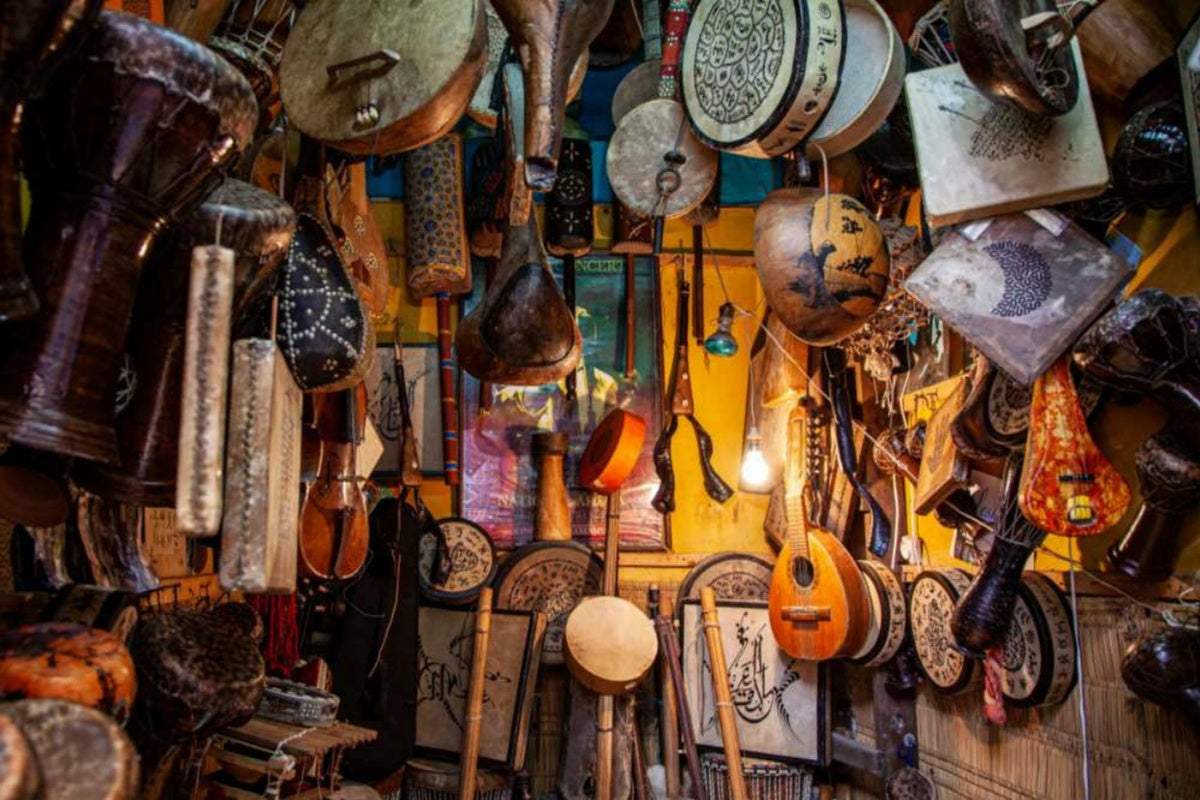Most of us love our guitars and are generally happy with how they sound. But are there any easy things you can do to make your guitar sound better than it does? Well, the answer is a definite yes. Regardless of the guitar you own, whether it’s a PRS Custom 24 or a cheap Strat copy, there are a number of things you can do to improve the sound.
So I decided to take a look at the 7 easiest guitar mods that will make your guitar sound better than ever! Let’s get started with some easier ones before moving on to getting the soldering iron out.
1. Change your strings
Yes, I know this is obvious, but it really can make a huge difference to your sound. Over time strings lose their ‘sparkle’ and become dull, some guitarists actually like this sound, but most prefer it when their guitar sings and a good set of strings that are tuned perfectly will give you exactly that.
And while on the subject of getting everything perfectly in tune, don’t forget to check and adjust your intonation if necessary. If you’re a beginner, intonation is making sure that the guitar is in tune across the whole neck, not just at the nut. This is achieved by playing the notes on the 12th fret (after you have tuned the guitar normally) and making sure that they are also perfectly in tune. If not adjust the position of the saddles on the bridge until they are.

2. Sort your nut out!
Add some graphite
Next on my list of the best ways to mod your guitar is even simpler than changing the strings - adding some graphite to the nut.
The movement of the string through the groove in the nut is vital for tuning stability. And the smoother that movement, the better your guitar will sound because it will maintain its tuning while you bend like a demon in your favorite solos.
First off, loosen the tension on a string so that you can easily remove it from the nut. Then add some graphite (pencil lead, the softer the pencil e.g., 3B, 4B, the better) carefully to the slots in the nut, making sure to get as little on the headstock and neck as possible. Then wipe away any excess with a cloth. Then place the string back in its groove and retune it.
Adjust your nut
Next up, if you have issues with your string height on the first few frets, making them uncomfortable to play, then you may need to adjust your nut.
There are two ways of doing this depending on what the issue is. If every string is too high from the fretboard, then take the nut off and carefully file the base, making sure to keep it level. However, don’t rush this, take a very small amount off the base of the nut and then put it back on the guitar to see if it’s right, then, if needed, remove the nut again and take another very small amount off. Repeat the process carefully and slowly until you get the action you want.
The second scenario is that one or two of your strings are too high. If this is the case, you will need to buy yourself a nut file and then very carefully increase the depth of the problem strings in the nut. Again, take things very slowly, just a few back-and-forths of the file will make more of a difference than you think. So, file a little, then test the height by putting the string back in the nut and tuning it to pitch. If you need more, slacking the tuning once more, remove the string from the slot, file a little more, and then test again. Patience is a virtue here, so take your time to get the perfect string height for your playing style.
A word of warning - there is a reason that most manufacturers (especially those who produce more budget instruments) have the nut heights that they do, that’s because it allows for any other slight defects in the manufacturing process, such as necks that may be slightly compromised. Therefore, be very cautious when adjusting the nut because it may lead to other issues such as string buzzing further up the neck. If you don’t think you have the necessary skills to take on this modification, then don’t, take the guitar to your local luthier and ask him to do the work for you.
3. Change your Nut
The two points where a string connects with the body of a guitar along its playing length - the nut and the bridge - are vital to getting the best possible sound from your guitar.
A lot of mid to lower-priced guitars are sold with plastic nuts which are very cheap to manufacture but do not improve the tone or the tuning stability. Upgrading to a bone nut (fantastic tone), a metal nut (improved brightness), or a graphite nut (fantastic for guitarists who like a dive-bomb every now and then) will make a distinct difference to how your guitar sounds and performs.
However, depending on what material you choose, you may still need to add graphite occasionally and make the necessary adjustments when you first fit the bridge to your guitar.

4. Change the Tuning Machines
I’ve discussed tuning stability quite a lot already, but the biggest issue with it on lower-priced guitars is usually the tuning machines. So, get rid of the cheapies and put a quality set of tuning machines on there.
This is normally a very simple mod as long as you buy the correct product. So make sure you order a set with the correct shaft diameter and hole spacing for a quick and easy swap over. Ordering the wrong-sized set could mean you have to widen the holes in your neck (best avoided) and/or drill new screw holes and possibly fill and spray where the old ones were. So, take your time to measure everything perfectly and double-check the product listing to make sure that the new set is a perfect fit.
5. Change the Bridge
As just mentioned, along with the nut, the bridge is the other place where the string connects with the guitar body, therefore upgrading your bridge can do wonders for your tone as well as your tuning stability.
This is especially the case if you have a recent or older Fender Jazzmaster or Jaguar, whose stock bridges can be vastly improved upon. Also, guitars with combined stop tailpieces and bridges such as older Gibson Les Paul Juniors, etc. can benefit from being replaced by a more modern design.
6. Change the Pots
If you enjoy riding your volume pots, you may have noticed that things can sometimes be a little hit-and-miss when you’re making adjustments. Swopping them with some aftermarket volume pots can greatly improve the pot's performance and therefore yours, as well as improving the sound.
You could go for something similar to Fender’s Treble bleed circuit to remove the muddy tone you often get when lowering your volume, as well as giving you more accurate control over the volume pot generally. Or, if you find that the volume pot is either basically on or off with no swell as you turn it up, then replacing it with a more sonically graduated design will give you the control you need.
This is the hardest of all the mods I’ve included and you’ll need to open up the guitar and remove the old pots, replacing them with the new ones. This will require confidence and some skill with a soldering iron. If you’re in any way unsure about completing this modification, then take your guitar to a local luthier.
7. Changing the look of your Guitar
You’re probably now asking yourself… “will changing some control knobs or a scratchplate actually improve my tone?” Well, yes and no. In terms of sonics, the answer is more than likely no, however in real terms it’s a definite yes. That’s because customizing the way your guitar looks will make you love your guitar even more, and the more you love your guitar, the more you will play it. And, you’ve guessed it, the more you play it, the better you will get, and… the better you will make it sound.
So, make that guitar look the way you’ve always wanted it to. Why stick with ‘standard’ white plastic control knobs when you can have any color you like, or change the design or the shape of them, or the material - from a range of different metals or even ones topped with Turquoise or Opal or even made from wood.
Wrapping it up
So, there you have it, 7 easy guitar modifications that are guaranteed to improve the sound of your guitar, as well as its playability and performance. The only decision is which of these mods to try first!
All the very best with making your guitar sound and look exactly the way you want it to.
If you like this article, please share it!
Be sure to join our FB Group Guyker Guitar Parts & Accessories Community to share your ideas! You can also have connections with like-minded guitar players, Guyker updates as well as discounts information from our FB Group.





